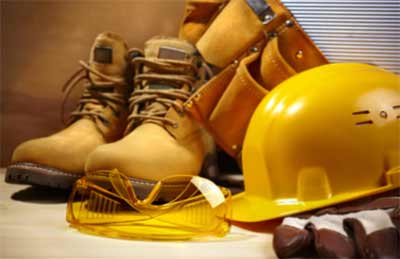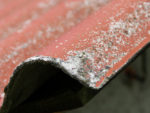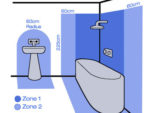This section is focused on giving you all the information that you need to do your DIY and home improvements projects safely and confidently. It is important that you know what you are allowed to do and what you are not, particularly when working with electricity.
It is not worth taking the risk, so have a quick read through the projects is this section if you need to know more about asbestos or carbon dioxide issues too. Below we give you some general guidelines to follow to ensure that you are safe and your DIY is injury free.
We cover all the information you need to know about the Building Regulations in a separate section. There we explain how your project is expected to be completed so that your home is safe for you to live in, and those that follow you.
If you are looking for specific information about using tools safely and work wear that you should use for particular jobs we have another section dedicated to Tool and DIY Safety Workwear.
DIY and Home Improvement Safety Guidelines
Safety is all about common sense, but that is not to say that accidents can’t happen. So try to avoid accidents happening in the first place, and then make sure that their impact is minimised if/when they do happen.

Preventing Accidents When Doing DIY
This is ideally what you want to achieve – no accidents means no potential for injuries and it will usually mean that the job as gone well without any snags. Obviously, this is what you want.
Here are our tips for making sure that that happens:
- Stop and think through how you are going to do a job before you start; identify any tricky areas and potential safety issues. Work out how you plan to tackle them and get more information or guidance if you need it
- Give yourself enough time. When you are rushing is the time an accident is most likely to happen. When you are feeling time constrained, try to check yourself and make a realistic assessment of what you can complete in the time you have. Accept that you might have to come back to this job another day; however inconvenient that might be it is likely to be less inconvenient that an injury
- Use the right tools. Use the right tool for the job that you are doing. The building trade is probably one of the oldest trades in the world and so by now there is a tool for virtually every job you can think of. Getting the right tool for the job means that you aren’t struggling or straining so less likely to have an accident
- Keep Tidy. Not only do you waste time (putting yourself under more pressure) but you run the risk of tripping up or stepping on something you shouldn’t. Also if you are organised you don’t need to worry that you haven’t put away all the dangerous items when someone comes to join you. This is particularly important if you have children or pets in the area
It is all common sense but this does get forgotten when you are under pressure to get a particular job done.

Minimising the Impact of Accidents When Doing DIY
This is considered as the last resort! Make sure you take all the necessary precautions to stop the accident happening in the first place, so you don’t have to rely on these tips below.
That said, we all know that accidents will happen, so with a little care and planning you can ensure that when they do no one will suffer any lasting injury. It is very obvious, but don’t get complacent and don’t think that just because it’s a quick job that an accident can’t happen.
Here are our top tips for reducing the impact of accidents when doing DIY and Home Improvements:
- Wear the right Gear – Make sure that you have the protection that will stop you being injured if something were to happen. Wear suitable eye protection if there’s a chance that anything could fly off what you are working on, head and hand protection should be used if anything for fall, masks or breathing protection if working with toxic or hazardous substances
- Have a first aid kit to hand or any required clean up equipment – Before you start make sure that you have what you need to clean up after you, particularly if you’re working with any nasty chemicals – soap and plenty of water is generally sufficient. If you do get some nastie or other on you, being able to get it off quickly will prevent or at least minimise injury. Also make sure that you have a first aid kit to hand, so you can patch up and even carry on
- Tell someone where you are going to be. God forbid that something does happen, but if someone knows what you are doing and where you should be, they can check in on you and make sure that you are alright. If you do need help, the earlier you get it the better the “repair job” is likely to be
- Read the Manual – Most of us aren’t very good at this, but try and have a quick skim through, particularly when operating power tools, because there are likely to be safety tips and hints that well prevent issues occurring, but also help you to make sure you are protected with the right kit if something does happen






